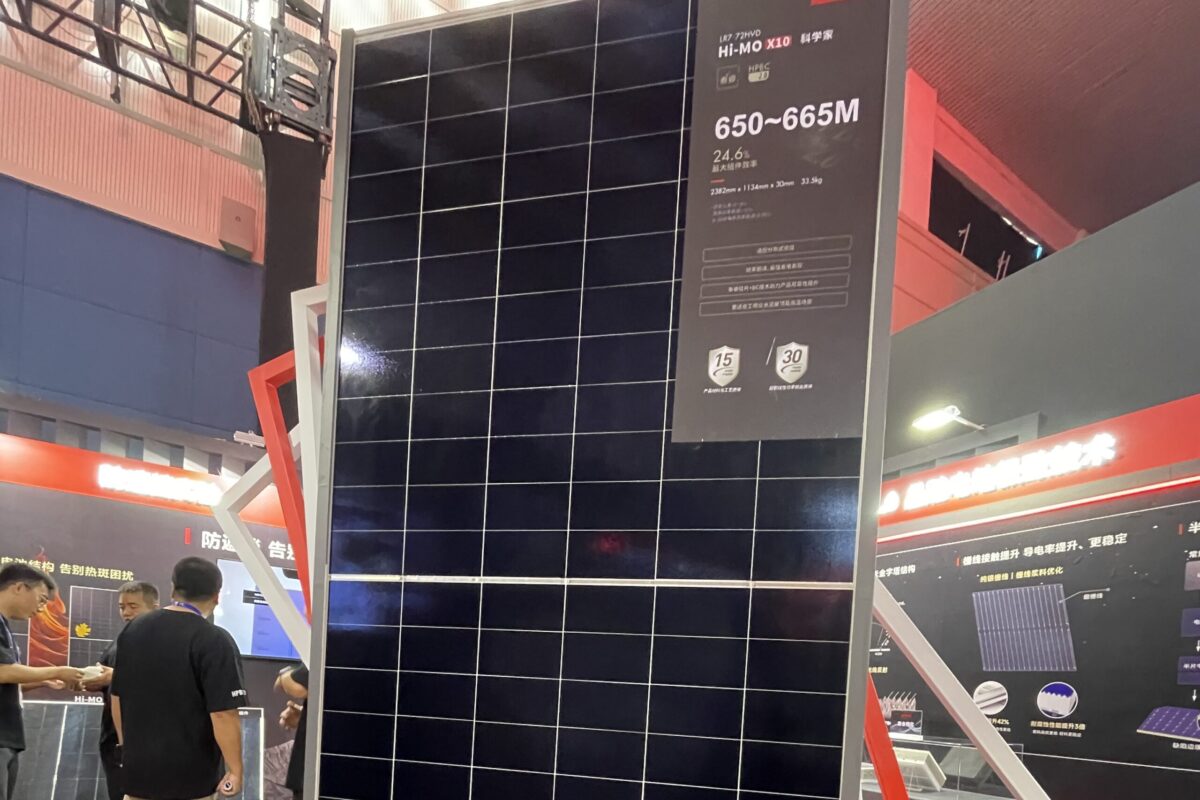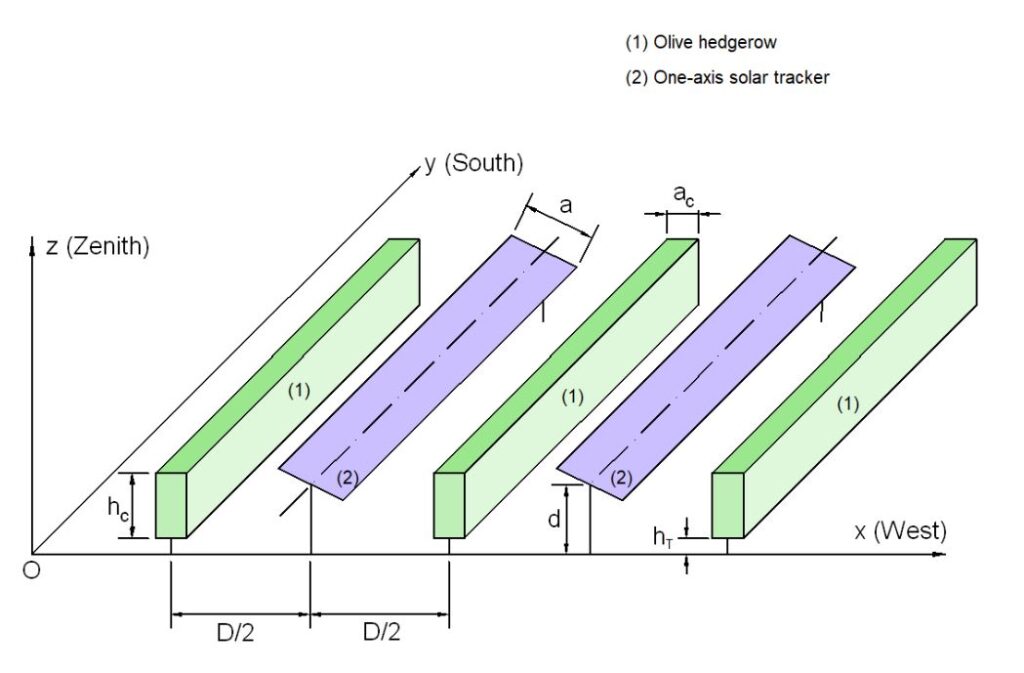Researchers in Spain have developed a new model to accurately estimate oil production and energy generation in agricultural voltaic installations built in olive groves. The proposed approach also allows to generate mathematical equations that estimate the influence of the system design variable.
Researchers from the University of Cordoba in Spain have developed a model to simulate solar radiation in agricultural voltaic installations deployed on olive groves with hedges.
Compared to traditional olive groves, hedgerow olive groves allow a higher degree of mechanization and lower costs. They are widely distributed in Spain and Portugal, where they cover 100,000 ha and 120,000 ha respectively, and they are becoming the most common orchard design in new plantings, especially in production zones far away from the Mediterranean. These orchards also offer benefits such as high planting density, easier pest and disease control, and easier irrigation and fertilization.
“Our tool integrates models to simulate irradiation all the way from the sun to the crop, even the absorption of irradiation through the crop canopy,” said the study’s lead author, Marta Varo Martínez. pv magazine. “The model can be used to assess not only electricity production, but also oil production.”
The proposed model takes into account the interaction between solar radiation, solar panels and crop cultivation in a south-facing agrivoltaic installation using horizontal trackers. In the proposed system configuration, both oil and energy production alternate, with an olive grove hedge between the solar panels in each lane.
The model takes into account global solar radiation and photosynthetically active irradiance (PAR), as well as their direct and diffuse components. “Once the incident irradiation in the crop is known, it is necessary to estimate the radiation transmission within the olive canopy,” the research team said. “To determine the spatial distribution of absorbed radiation within the canopy, it is assumed that the canopy is divided into adjacent parallelepipeds.”
The instrument was applied to a south-facing super-intensive olive farm in Cordoba, southern Spain, with different row spacing. The PV system was assumed to be based on trackers with astronomical tracking and without backtracking. “The height of the axis of rotation varied from 2.5 m to 3.5 m in 0.5 m increments and the width of the modules from 2 m to 4 m in 1 m increments,” the academics explained, noting that the modeling generated 81 different geometric combinations. .
The simulation made it possible to obtain the distribution of the absorbed PAR within each of the elementary parallelepipeds of the hedge and revealed that the highest amount of oil production per unit length of the hedge can be achieved by the greatest distance between the rows of trees, which in turn allowing greater interception. of solar radiation. “However, the use of large distances implies a reduction in the number of hedges per hectare, which leads to a decrease in oil production per unit area,” the team pointed out.
The proposed approach reportedly allows accurate estimation of the effect of shading caused by solar panels, as well as the annual production of oil and electricity. It also allows the generation of mathematical equations that estimate the influence of the system design variables. “These comparisons also show the tendency of the data to find the best applications with the smallest distances tested,” said Varo Martínez.
Their findings can be found in the study “Electrical and agricultural productivity simulation model of an agrivoltaic system with olive trees”, published in the Magazine for cleaner production.
Another group of researchers from the University of Cordoba recently developed a new method to calculate how much land can be used for agricultural purposes under photovoltaic installations, based on dual-axis solar trackers.
This content is copyrighted and may not be reused. If you would like to collaborate with us and reuse some of our content, please contact: editors@pv-magazine.com.
Popular content


